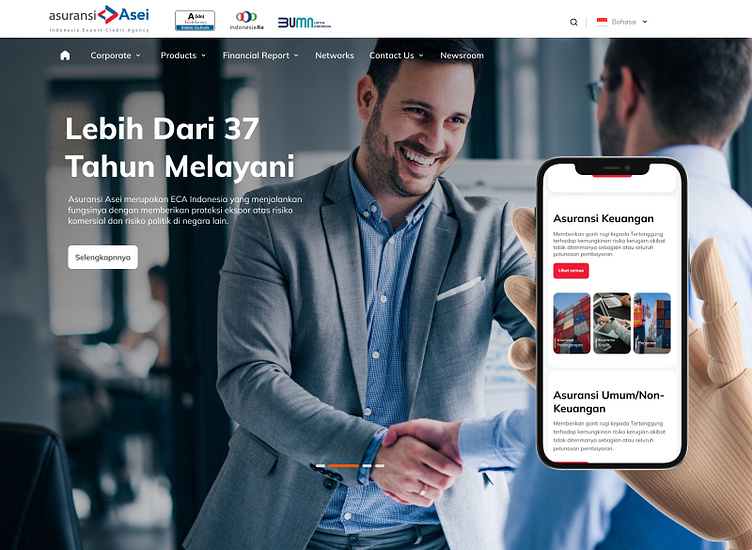Redesign the ASEI Website
Redesigning a website is necessary in many circumstances to ensure it remains effective, relevant, and aligned with business goals. Here are some key indicators when we should redesign an ASEI website:
Outdated Design: If the website looks visually outdated compared to competitors or modern design trends, it may be time for a redesign to improve aesthetics and enhance the overall user experience.
Poor User Experience: High bounce rates, low engagement metrics, or frequent complaints about usability issues indicate that the website may not be providing an optimal user experience. A redesign can address these issues and make the website more intuitive and user-friendly.
Changes in Branding or Positioning: If the company has undergone a rebranding or repositioning, the website should reflect these changes to ensure consistency across all brand touchpoints.
Technological Advancements: Advances in web technologies, such as HTML5, CSS3, and responsive design, may necessitate a redesign to modernize the website and take advantage of new capabilities and features.
Mobile Responsiveness: With the increasing use of mobile devices for browsing the web, a redesign may be necessary to ensure that the website is fully responsive and optimized for mobile users.
Shift in Business Goals or Focus: Changes in business objectives, target audience, or product offerings may require a redesign to realign the website with the company's current priorities and messaging.
Performance Issues: Slow loading times, frequent downtime, or technical glitches indicate underlying issues with the website's performance that may require a redesign to address.
SEO Concerns: If the website is not ranking well in search engine results pages (SERPs) or is not optimized for relevant keywords, a redesign can improve SEO performance and increase organic traffic.
Lack of Conversion Optimization: Low conversion rates or ineffective calls-to-action (CTAs) may signal the need for a redesign to optimize conversion paths, improve lead generation, and drive sales.
Feedback from Users or Stakeholders: Direct feedback from users, customers, or stakeholders about areas for improvement, such as navigation, content organization, or visual design, can prompt a redesign to address their concerns and preferences.
Overall, ASEI's website redesign project was guided by a strategic evaluation of website performance, user needs, and business objectives to ensure that the site remained a valuable asset to the organization. ASEI's marketing team must also monitor key metrics on a regular basis, and staying up to date on industry trends will help identify when a redesign is required to remain competitive and relevant in the digital landscape.
Finally, if you require a website redesign to maintain the quality of your brand in the eyes of your customers, do not hesitate to simply trust us. Visit ulabs.uloom.id to discuss website issues.
Please visit the asei.co.id site to see the actual results.

